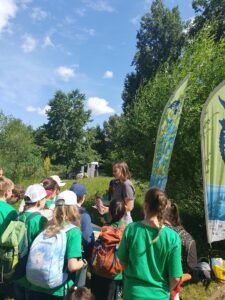One important part of the LIFE Boat 4 Sturgeon project is the establishment of a standardized Danube-wide population monitoring for all four sturgeon species. In order to target different age classes, it is necessary to use different methods.
The project team of Vienna joined up with the team from Slovakia for a net sampling session in Slovakia. The caught sterlets were tagged and measured to get a better overview of the local population. Selected mature individuals were transferred to Austria and propagated to increase the genetic diversity of the broodstocks.
In Romania, the downstream migration of Young-of-the-Year beluga sturgeon (Huso huso) is monitored at a feeding site by the Danube Delta National Institute for Research and Development (DDNI) using drifting trammel nets to collect information about spawning success and processes at the population level. One of our employees joined this years’ sampling campaign for one week in June.
Between end of June and the beginning of July, a team from the LIFE Boat 4 Sturgeon project attended a sturgeon sampling workshop in Georgia. Together with WWF Causcasus and other local and international experts, we are developing a standardized sturgeon population monitoring program for the Rioni River and the coastal shelf. The goal is the assessment of population structure and size of the occurring species including the colchic sturgeon (Acipenser colchicus) and the genetic landscape of all species to encounter genetic diversity and possible exchange processes between the Georgian coastal shelf and rivers and other tributaries to the Black Sea.
We are looking forward to maintain and increase further collaboration and to pursue the quest of establishing a standardized sturgeon monitoring in the Danube and the Black Sea catchment.



